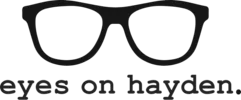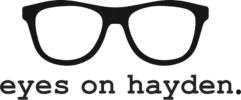
The brain and the eyes work together to create a visual experience. On one hand, the eyes send signals to the brain, which allows it to translate that data into visuals; on the other, the brain sends signals to the muscles attached to each eye, controlling their movements. If anything disrupts these signals and the brain, there may be problems with eye teaming, eye tracking, motor skills and learning. Balancing boards, or teetering boards, help with these components by retraining motor patterns and neurological links.
What to Expect In Treatment
During a vision therapy session that includes a balancing board, the patient stands—feet shoulder length apart—on the wobbly board that is able to move backwards, forwards and from side to side. Often, during the first session, the person is asked to start by balancing themselves forwards, backwards, right and left. This exercise allows the individual to learn how to adjust their balance and control their body. Coordinating the body is important because the coordination of the eyes rely on the body and brain’s ability to balance the entire body, thus learning to balance the body helps the eyes.
Once the patient has mastered adjusting their body on the board, they can then move on to other activities like using the board with a saccadic fixator, which is a wall-mounted square board with a starburst design. Along the various striations of the starburst are lighted buttons. As the buttons light up, the individual works quickly to see how many buttons they can push before the lights go out. The key in doing this activity is to keep the head still and the body steady while on the balancing board. Saccadic fixators and balance boards are used together to test, evaluate and develop eye-hand coordination, reaction times and spatial integration.
Additional Treatment Options
Another addition that may be used with a balancing board is a chart that is pinned to a wall. The patient is then required to track and locate letters and numbers in columns and rows while they are balancing at the same time.
Marsden balls may also be incorporated. Here, a ball with letters, numbers, colors, pictures, or a combination is hung from the ceiling. In activities used to help the patient focus their visual attention, they may be asked to focus on a figure while knocking the ball with a rod, or hitting or catching it with their palms, fists or thumbs. Again, in this vein, these activities are done while the patient is using a balancing board.
Over time, using balancing boards with other vision therapy programs can help in the following areas:
Cognitive
- Learning fresh material
- Sequencing information and data
- Integrating sensory information
Visual
- Eye tracking
- Eye teaming
Motor
- Rhythm
- Handwriting
- Speech
- Coordination
- Posture and gait
Having patients stand on a teetering board, or balancing board, as they look at objects and perform visual tasks helps the brain and eyes work better together so that they can do their jobs. Doing so helps the patient move better and adjust to performing tasks in their “real-world” environment, which is constantly moving or having them move while they think and use both their eyes and brain to assess and make sense of the things around them.


